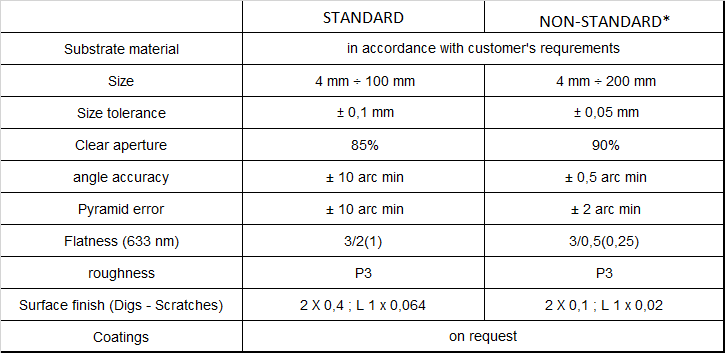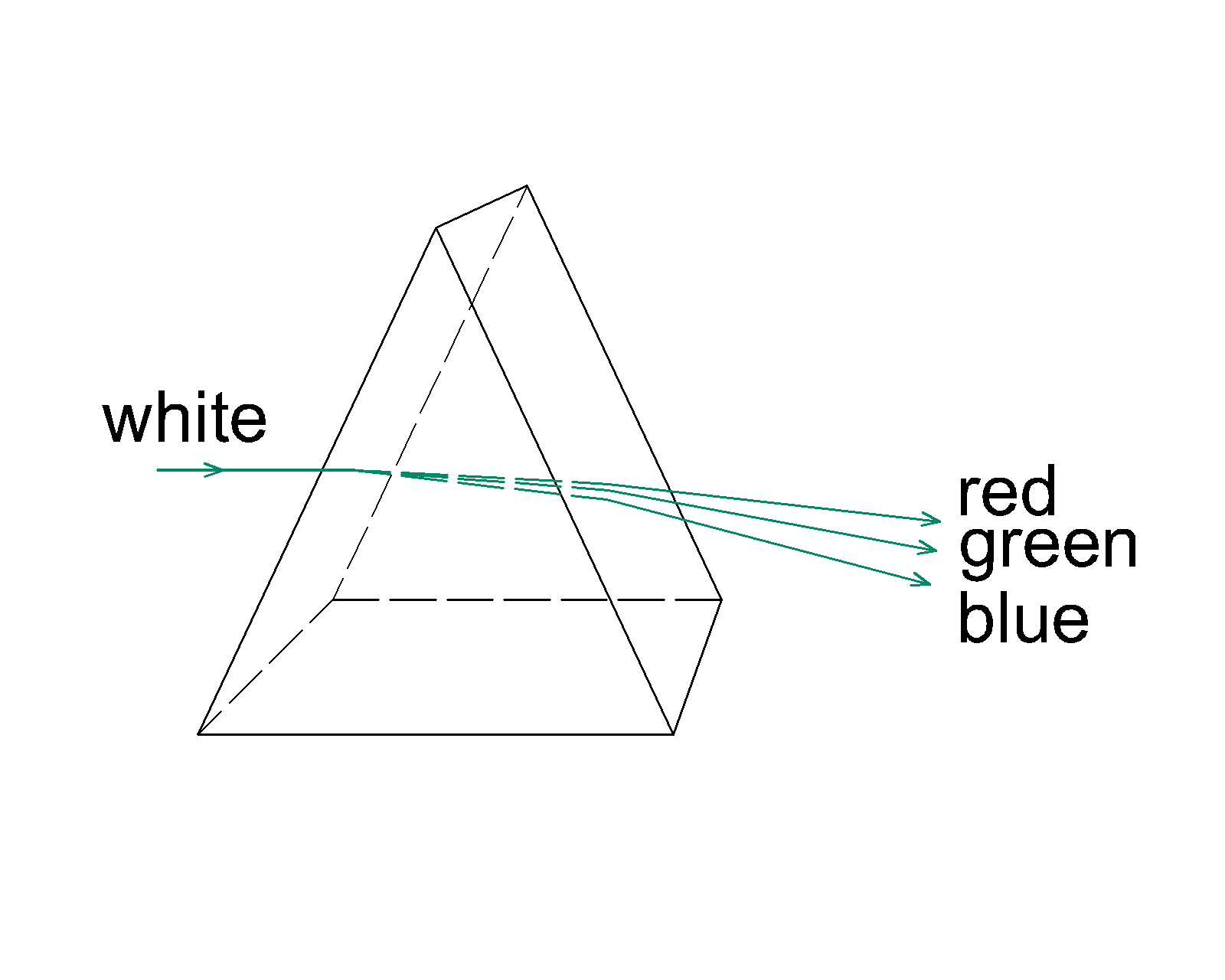DISPERSION PRISMS
Dispersion prism is a glass block in shape of pentahedron with three optically active surfaces. These prisms operate in transmitted light and are commonly used to diverge light in broad range of optical systems. The direction of light exiting the prism depends on wavelength, a feature which allows the prism to separate incident beam into its component wavelengths.
Applications: wavelength tuning, spectrometry and more
Dispersion prisms, or arrays of multiple elements, perform variety of functions in optical systems. They act as polychromator to separate different wavelengths in a beam, or to combine beams of different wavelengths. In laser applications, dispersion prisms are used for wavelength tuning, dispersion compensation or as beam separators. The unique capability to separate incident light led to their wide use as dispersive elements in spectrometers.
How dispersion prism works
The fundamental phenomenon taking place inside the prism is dispersion that separates different wavelengths contained in the polychromatic light beam. It is described by angle of deviation which describes the difference between the direction of the incident light which enters the entry face of the prism and the direction of refracted ray which leaves the second face. The refractive index of prism material depends on wavelength, and as such the angle of deviation differs across the spectrum. Most common dispersion prism is the equilateral prism with the refraction angle of 60 degrees. The bigger the difference of refraction indexes for different wavelengths, the more pronounced the spectral separation.
Please visit prisms for detailed specification of prism parameters in terms of dimensions, surface quality, etc.
Do not hesitate to contact us if you need any further information on Solaris Optics prism fabrication services.
***






